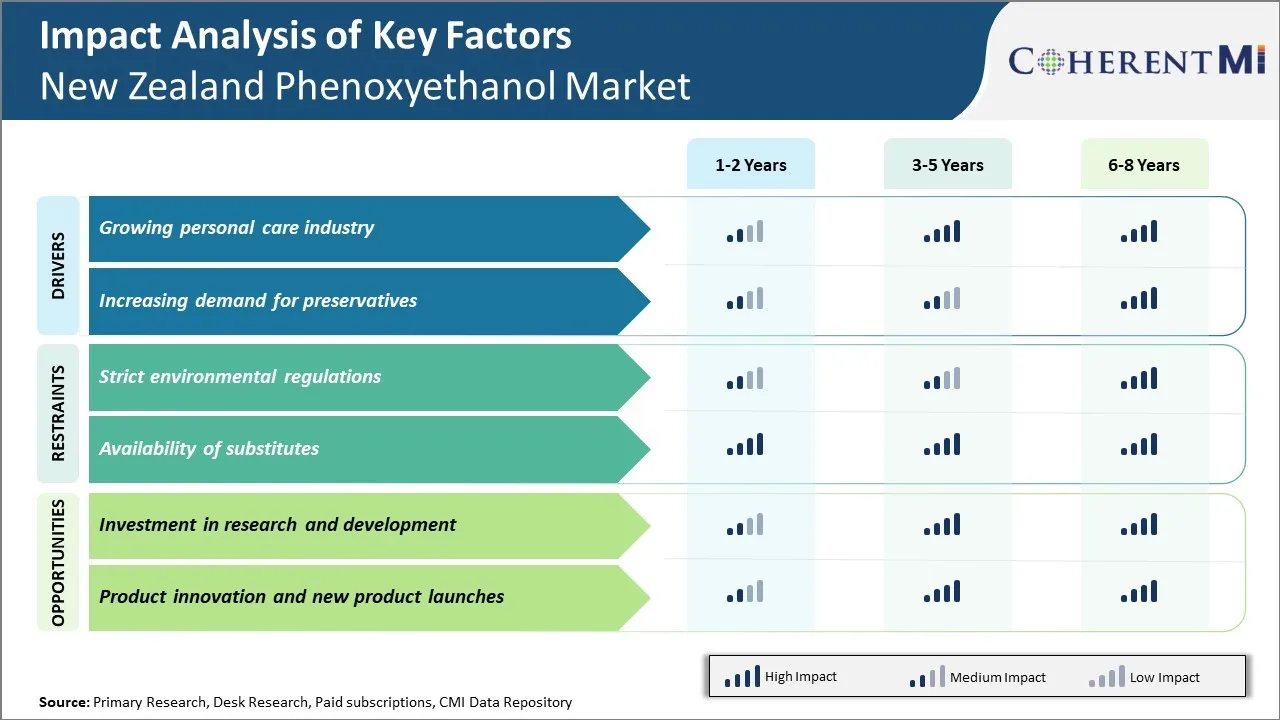New Zealand Phenoxyethanol Market Trends
Market Driver – Growing Personal Care Industry
The personal care industry in New Zealand has been witnessing significant growth over the past few years. With increasing disposable income and health awareness among consumers, demand for high-quality personal care products such as cosmetics, skin care creams, hair care products etc. has witnessed a considerable surge. As people are more inclined towards using natural and organic personal care items, the demand for phenoxyethanol as a preservative in these products has also risen steadily.
Phenoxyethanol is widely used by personal care manufacturers due to its excellent preservative properties as well as ability to extend the shelf life of products. It is effective against bacteria, yeasts and molds and is popularly being used across a wide range of cosmetic formulations including lotions, creams, hair colorants and sunscreens. With the personal care sector in New Zealand expanding at a brisk pace, stimulated by changing lifestyles and rising health consciousness post-COVID, it has led to higher consumption of natural cosmetic items which require preservatives like phenoxyethanol.
Market Driver – Increasing Demand for Preservatives
The rising awareness among consumers about importance of using cosmetic and personal care products with natural ingredients is driving significant demand for preservatives obtained from natural sources. Phenoxyethanol is gaining popularity as preservative derived from natural sources like green tea and glycerin. Phenoxyethanol is being widely used as preservative in products like lotions, creams, makeup and hair care items due to its ability to kill or inhibit growth of bacteria, yeasts and molds.
This increasing consumer preference for natural ingredients is a major factor fueling the growth of phenoxyethanol market in New Zealand. Various cosmetic brands have started emphasizing on labels that showcase natural or plant-based formulations to attract health-conscious buyers. Growing trends like zero-waste and clean beauty have further encouraged use of preservatives like phenoxyethanol extracted from green tea and glycerin in personal care items. According to estimates by World Health Organization, sales of natural and organic personal care products grew over 13% between 2018 to 2021 globally. This rise in demand for natural cosmetics is directly benefiting phenoxyethanol market in New Zealand.

Market Challenge – Strict Environmental Regulations
Strict environmental regulations surrounding phenoxyethanol usage is placing limitations on the growth of New Zealand's phenoxyethanol market. Phenoxyethanol is widely used as a preservative in cosmetic and personal care products due to its effective antimicrobial properties. However, it has been restricted for use in baby products in many regions due to potential safety concerns.
New Zealand has implemented stringent limits on the concentration of phenoxyethanol permitted in products for young children and infants. Only up to 1% concentration is allowed, whereas the international standard permits usage of up to 5%. This regulatory threshold set by New Zealand's Environment Protection Authority is more conservative compared to other developed nations like the United States, United Kingdom, and European Union. As a result, many international cosmetic brands seeking to export products to NZ are forced to explore alternative preservative options or develop dual formulations to meet local norms.
The recent trend shows that more than 15% of personal care launches in NZ in 2021 had listed 'phenoxyethanol-free' as a key product attribute according to the ingredient database maintained by the EPA.
Market Opportunity – Investment in Research and Development
Investment in research and development could provide a significant opportunity for growth in the New Zealand phenoxyethanol market. Phenoxyethanol is widely used as a preservative in cosmetics, personal care products, and pharmaceuticals due to its bactericidal and fungicidal properties. However, with rising health consciousness, consumers are increasingly seeking natural and plant-based preservatives that are less likely to cause sensitivity or irritation.
Significant R&D efforts towards discovering new natural preservative alternatives or developing hybrid natural-synthetic preservatives could help companies in this market develop more innovative and sustainable products that meet evolving customer preferences. This will help protect market share from substitutes. Companies may also explore modifying existing phenoxyethanol formulations to make them more compatible with natural and organic ingredients. Successful R&D endeavors will allow companies to command a premium and strengthen their brands as being environmentally responsible.
Data from New Zealand Ministry of Business, Innovation & Employment shows that business expenditure on R&D as a percentage of GDP increased from 1.31% in 2015 to 1.49% in 2019, indicating growing investments.